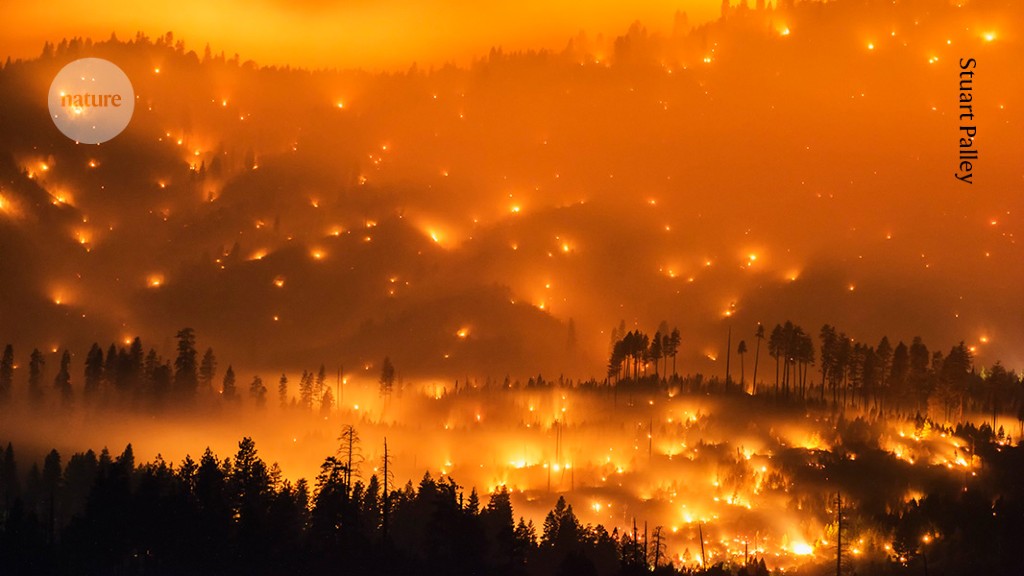Impact of Drought-Driven Overnight Burning on North American Wildfires
Belangrijkste concepten
The author argues that drought-induced overnight burning events are a significant factor in fueling large wildfires in North America, challenging traditional fire behavior expectations.
Samenvatting
Drought-induced overnight burning events (OBEs) are increasingly contributing to the intensity and spread of wildfires in North America. These events, often occurring with little warning, have been responsible for some of the most destructive fires in recent years. Luo et al. emphasize the critical role of OBEs in driving large wildfires by priming vegetation to persist under conditions typically unfavorable for fire propagation, such as lower night-time temperatures and higher humidity.
Samenvatting aanpassen
Herschrijven met AI
Citaten genereren
Bron vertalen
Naar een andere taal
Mindmap genereren
vanuit de broninhoud
Bron bekijken
www.nature.com
Drought-fuelled overnight burning propels large fires in North America
Statistieken
Global warming is causing nights to warm rapidly in many areas.
Some of North America's deadliest fires occurred at night with little warning.
OBEs are a key factor driving large wildfires in the United States and Canada.
Drought is priming vegetation to help fires persist under challenging conditions.
Citaten
"OBEs are a key factor driving large wildfires in the United States and Canada." - Luo et al.
"Drought is priming vegetation to help fires persist in conditions that usually pose a barrier to fire." - Luo et al.
Belangrijkste Inzichten Gedestilleerd Uit
by Jennifer K. ... om www.nature.com 03-13-2024
https://www.nature.com/articles/d41586-024-00536-4
Diepere vragen
How can communities better prepare for overnight burning events?
Communities can better prepare for overnight burning events by implementing several key strategies. Firstly, establishing robust communication systems to ensure timely alerts and warnings about potential OBEs is crucial. This includes utilizing emergency notification systems, social media platforms, and community outreach programs to disseminate information effectively. Secondly, conducting regular evacuation drills and developing comprehensive evacuation plans are essential in ensuring the safety of residents during nighttime wildfires. Additionally, creating defensible spaces around homes by clearing vegetation and implementing fire-resistant landscaping can help mitigate the impact of OBEs on residential areas.
What are the implications of these findings on wildfire management strategies?
The findings regarding the role of OBEs in driving large wildfires have significant implications for wildfire management strategies. Understanding that drought conditions prime vegetation for overnight burning highlights the importance of proactive measures such as fuel reduction efforts and prescribed burns to reduce fire risk. Incorporating this knowledge into firefighting tactics can lead to more effective suppression efforts during nighttime wildfires. Furthermore, prioritizing resources towards early detection and rapid response capabilities specifically tailored for OBEs can enhance overall wildfire management outcomes.
How can advancements in technology aid in early detection and mitigation of OBEs?
Advancements in technology play a crucial role in improving early detection and mitigation of overnight burning events (OBEs). Remote sensing technologies such as satellites equipped with infrared sensors enable real-time monitoring of fire activity even during nighttime hours when visibility is limited. Utilizing drones equipped with thermal imaging cameras allows firefighters to assess fire behavior accurately and plan strategic responses accordingly. Furthermore, sophisticated modeling tools powered by artificial intelligence algorithms can predict fire spread patterns based on environmental factors like temperature, humidity, wind speed, and fuel moisture content, aiding in preemptive decision-making for mitigating OBEs effectively.
0
